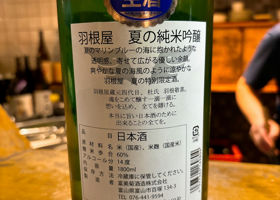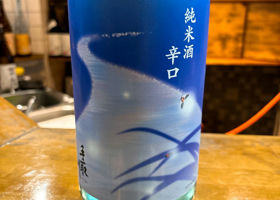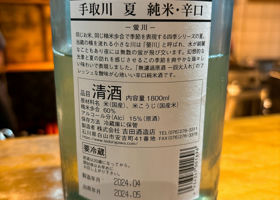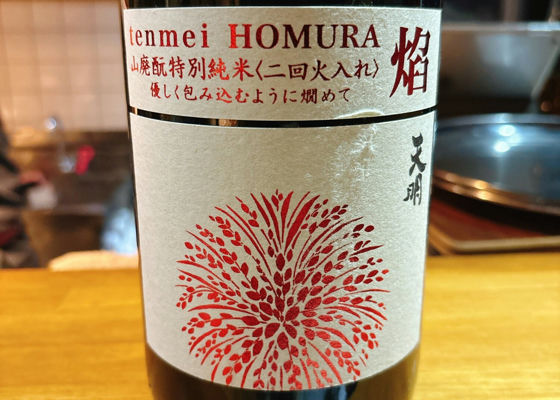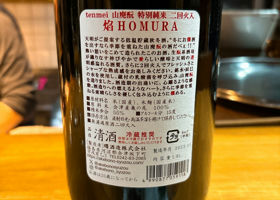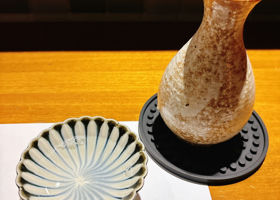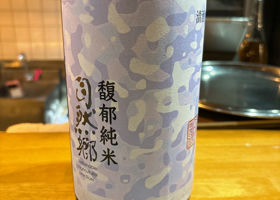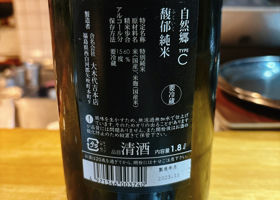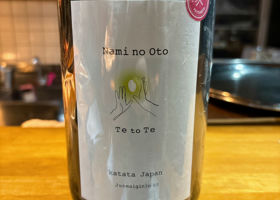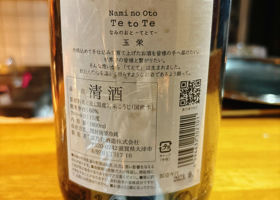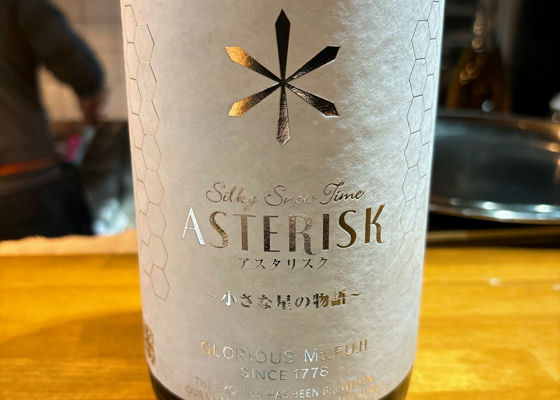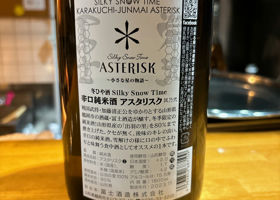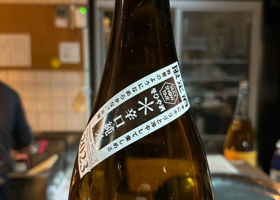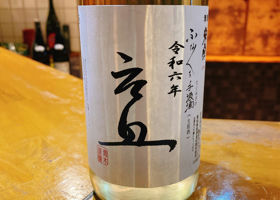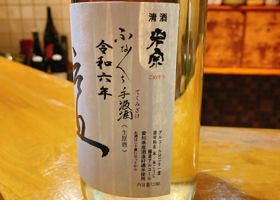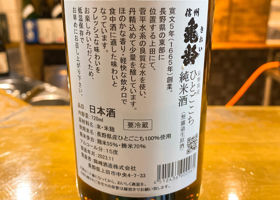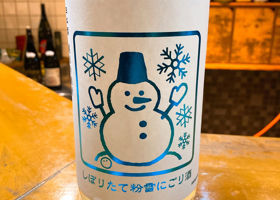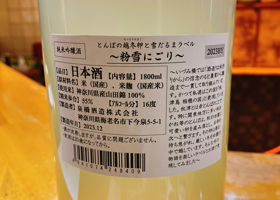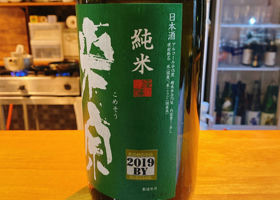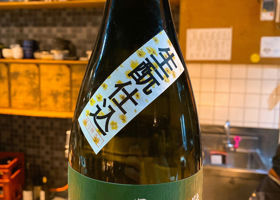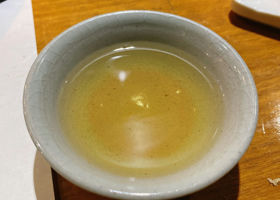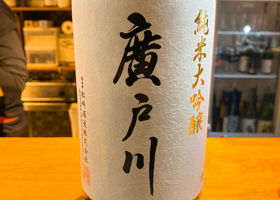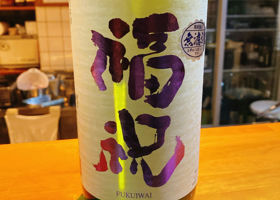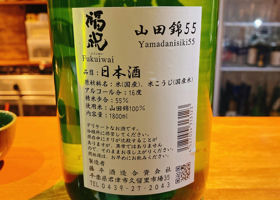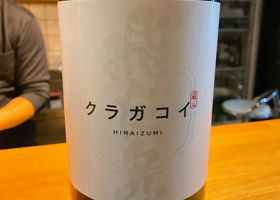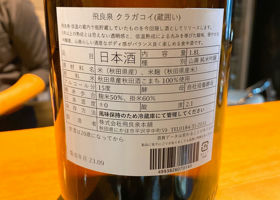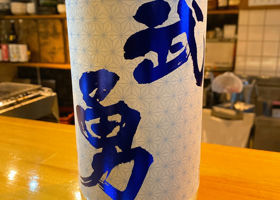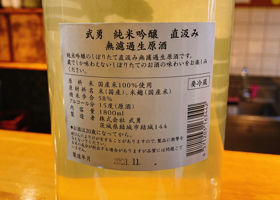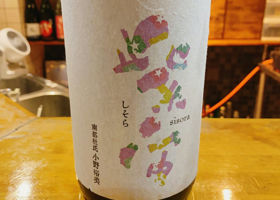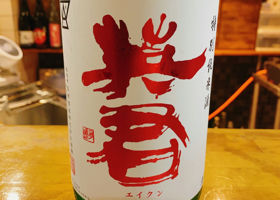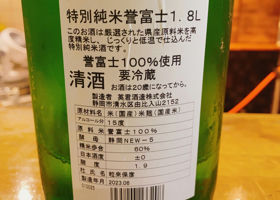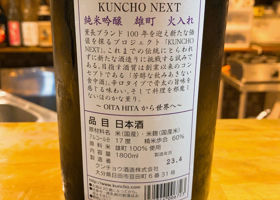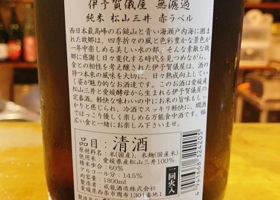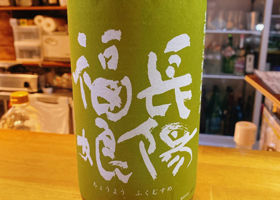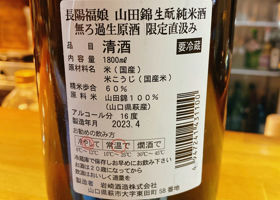Timeline
やす☆Fresh, clean and clear mouthfeel. It has a very light, soft, juicy feel and is a very easy-drinking summer sake, thanks in part to the fact that it is 14 degrees Celsius. やす☆Re-drank at the 8/10 Umaimon TEN. No change in impression. やす☆Tetorigawa is a long time coming. It has a clean, crisp mouthfeel with a subtle, soft umami flavor. Although it is said to be dry, the sharpness is gentle. やす☆The first Tenmei Yamahai I ever had was served warm.
It has a clear, mellow sweetness and umami, but it has the thinness typical of 55% polished Tenmei, and I personally would like it to be more robust. The sharpness with acidity of Yamahai is very pleasing. やす☆The juiciness typical of this brewery is still there. It has a mild umami flavor that is slightly classical. やす☆It has a clear and smooth mouthfeel, with a soft flavor and good sharpness typical of a 60% polished sake. This sake is also suitable for a mid-meal drink. やす☆It has been a long time since I last tasted Eiko-Fuji.
As the name "dry" suggests, it has a clear and light taste, but the umami of the rice can also be felt, which may be due to the 80% polished rice. It is certainly dry for an Eiko-Fuji, but it is not too sharp and easy to drink as it has a Sake meter value of +2. やす☆When served cold, it is refreshing and crisp.
When warmed up with some water, it becomes mellow and has a sharpness that is typical of aluzoe. やす☆It has a clear, good flavor with a hint of freshness and grape-like fruitiness. The strong fruitiness is typical of Shinshu Kamerei for a junmai sake that claims to be a food sake. やす☆It is fresh even though it is fire-aged. It has the softness of orikara, but with a strong sense of crispness and sharpness. It has a refreshing nigori taste. やす☆2019BY in warm water. It is a sake with no yeast added.
The color is yellowish. It has a strong sharpness with acidity from the sake yeast. Sake with a strong sense of maturity. やす☆The first Hirotogawa Jun Dai in a long time.
The wonderful silky feel of 45% polished rice is impressive. It has a soft umami flavor and disappears nicely. やす☆Clear mouthfeel with a good firmness. A food wine type. やす☆It has a clean, clear flavor that is hard to believe it is a Yamahai aged sake, and is easy to drink. The acidity of Yamahai is also gentle. やす☆First time for the first time for the first time for the first time for the first time for the first time for the first time.
Fresh and crisp with a crisp acidity. The flavor increases as the temperature rises. やす☆It has an elegant sweetness and flavor reminiscent of melon, which disappears quickly. In general, it has a soft and gentle taste, which is typical of female brewers. ゆかちんGood morning, Yasu☆-san! I also drank the same one 🍶I'm drinking it at home while thinking 😋 that it's just a popular drink now! やす☆Good morning, Yucachin 😄
We had the same drink 😆.
Enjoy drinking your favorite alcohol at home 🍶✨. やす☆First Nishi-no-Seki.
When served cold, it is heavy and closed with a firm umami. Warmed, it has more sweetness and soft umami. Clearly prefers it warmed. やす☆First Eikun. It has a similar feeling to Kaorucho, which we drank just before, but is a little lighter. It has a refreshing yet good umami flavor, and seems to be good as a mid-meal drink. やす☆First Kaorucho. The mouthfeel is refreshing. It has a slightly heavy umami taste at the end and finishes quickly. It seems to be good as a food sake. やす☆It has been a long time since I have had a KAGIYA.
It has a light, clear mouthfeel with just the right amount of umami that disappears quickly. As the temperature rises, it becomes more robust.
A truly versatile all-purpose food sake that is easy to drink without any peculiarities. やす☆It has a freshness and firmness, and finishes with an acidity that is typical of a sake made from the traditional sake brewing method. It looks good even when heated.
It is quite different from the fast brewed jungin we drank the other day. RecommendedContentsSectionView.title

